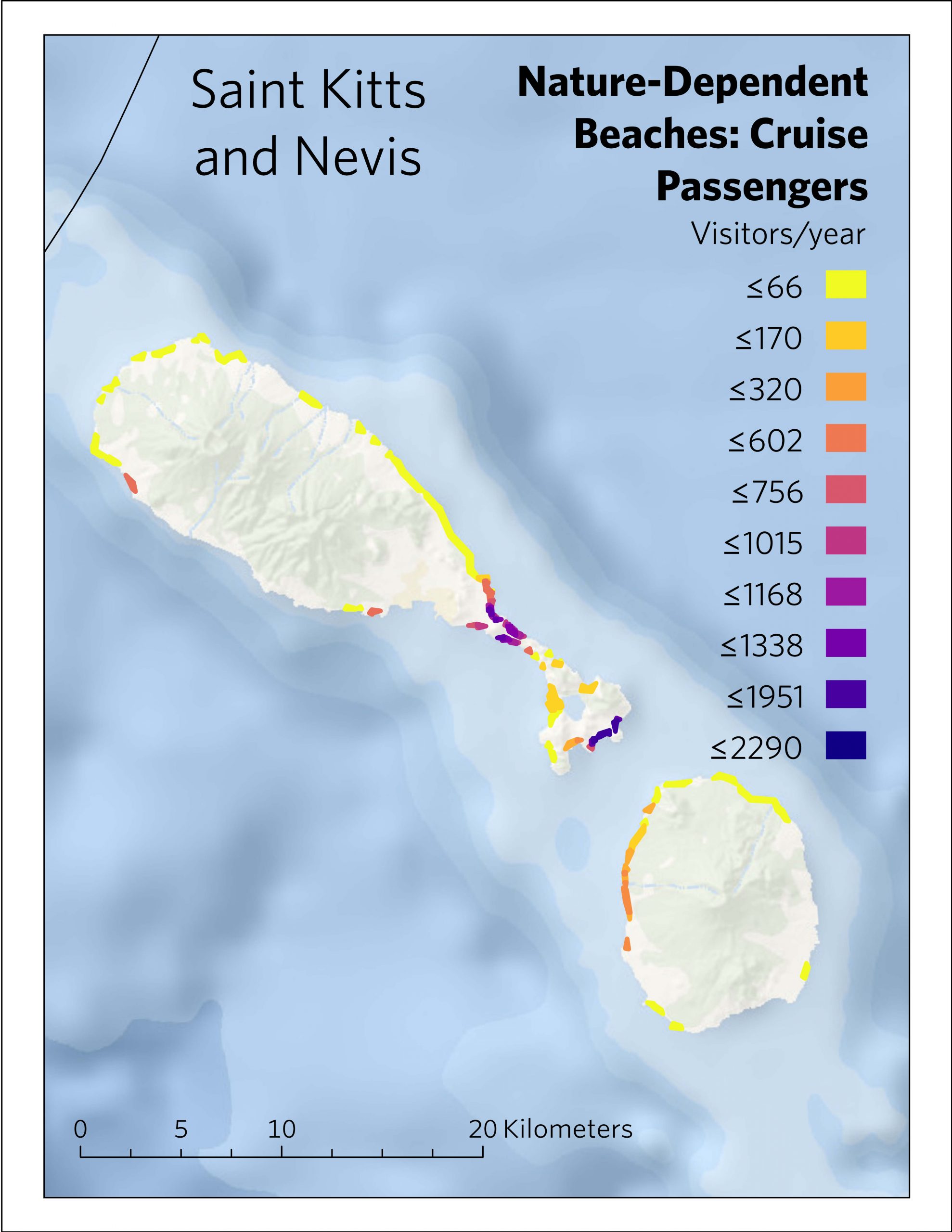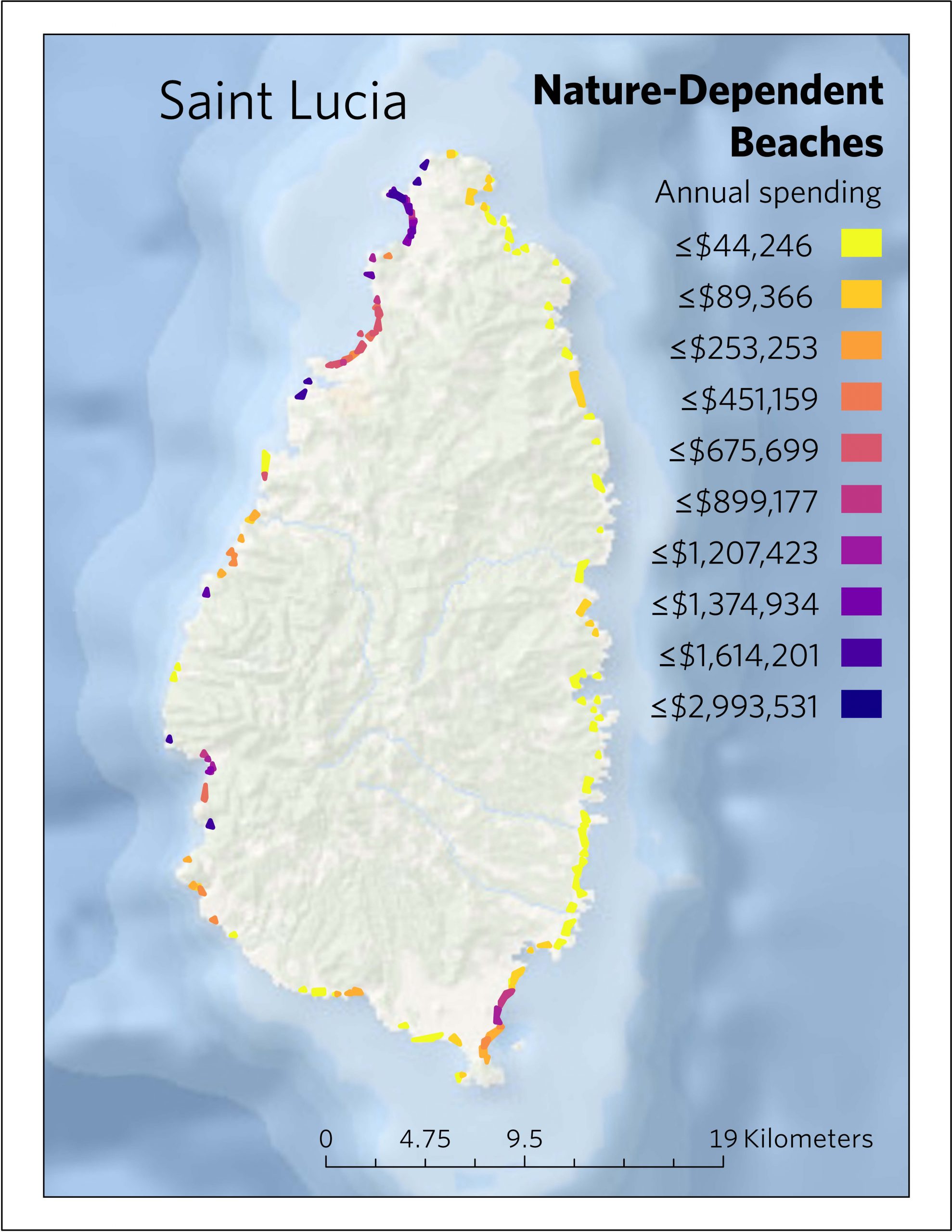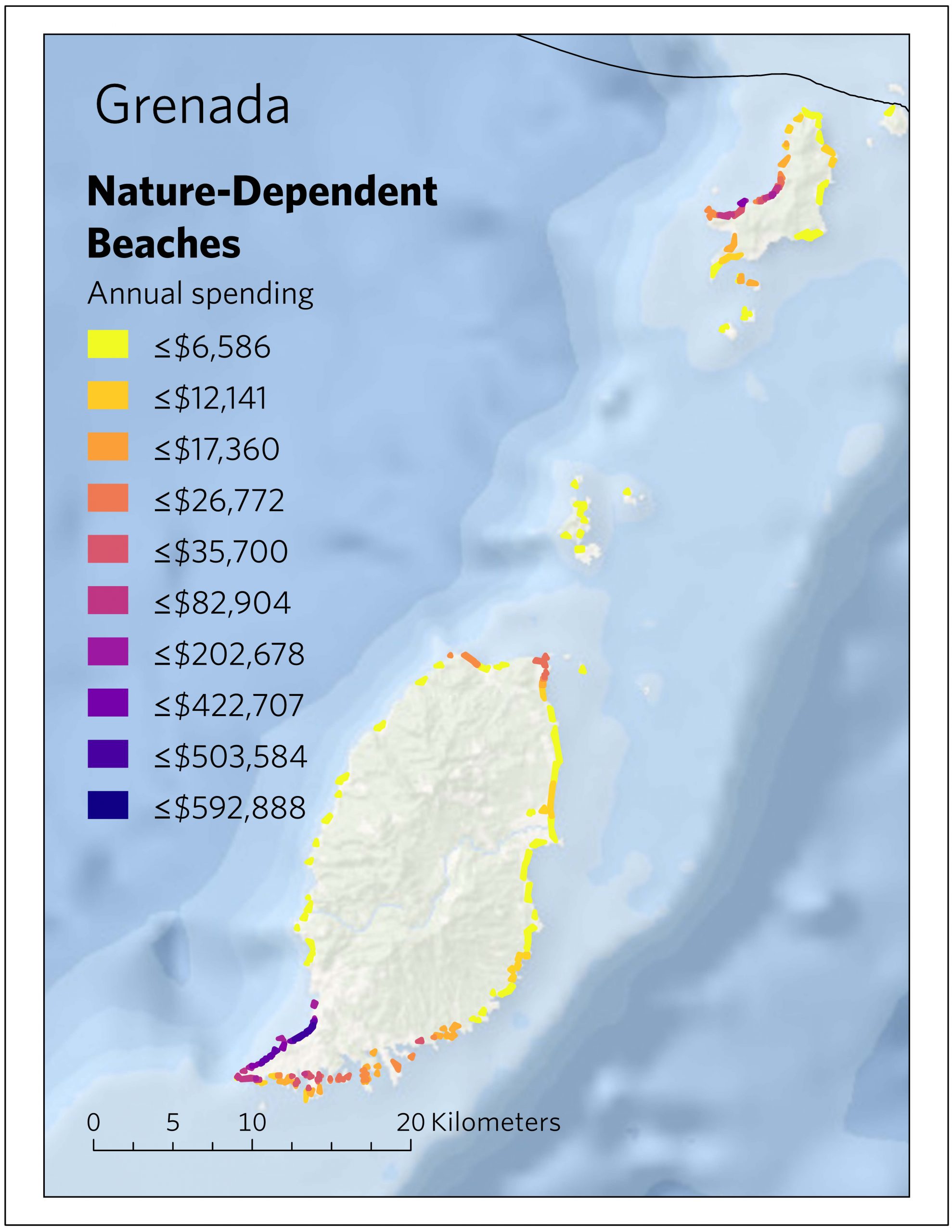The Caribbean is highly dependent on coastal and marine tourism activities, many of them associated with coral reefs, either directly (“on-reef” e.g., SCUBA, snorkeling) or indirectly (e.g., beach-related activities, access to fresh seafood). Previous studies have quantified and mapped the impact of reefs on beaches at the global scale, as “reef-adjacent” benefits. In this study, we link these values to the beaches themselves, rather than to nearby reefs, and focus on a range of natural factors that draw tourists to these areas. Nature-dependency describes the level of dependence that any beach tourism may have on key natural values. Such values include: white sand (coral-derived); natural vegetation adjacent to, or dominating views from the beach; turquoise; and/or dappled clear water.
Natural values of the beaches in the five countries evaluated under this project are estimated to be generating some US$318 million of tourism expenditure annually with 143,000 overnight visitors and 565,000 cruise visitors who are attracted specifically to the pristine, natural aspects of the region’s beaches.
Maps of seafood restaurant hot spots also provide supplementary information about the influence of coastal habitats on tourism activities in the region.
This is the first time that these components of nature-dependent beach tourism have been so extensively mapped and analysed at these resolutions. We believe that the results are of considerable use for understanding the value of coral reefs and coastal ecosystems at local scales, applicable to management, that they will enable a broad range of users from the public to industry to government to better plan and manage both the tourism industry and any other active sectors within the blue economy.




Image Credits: © Marjo Aho


























